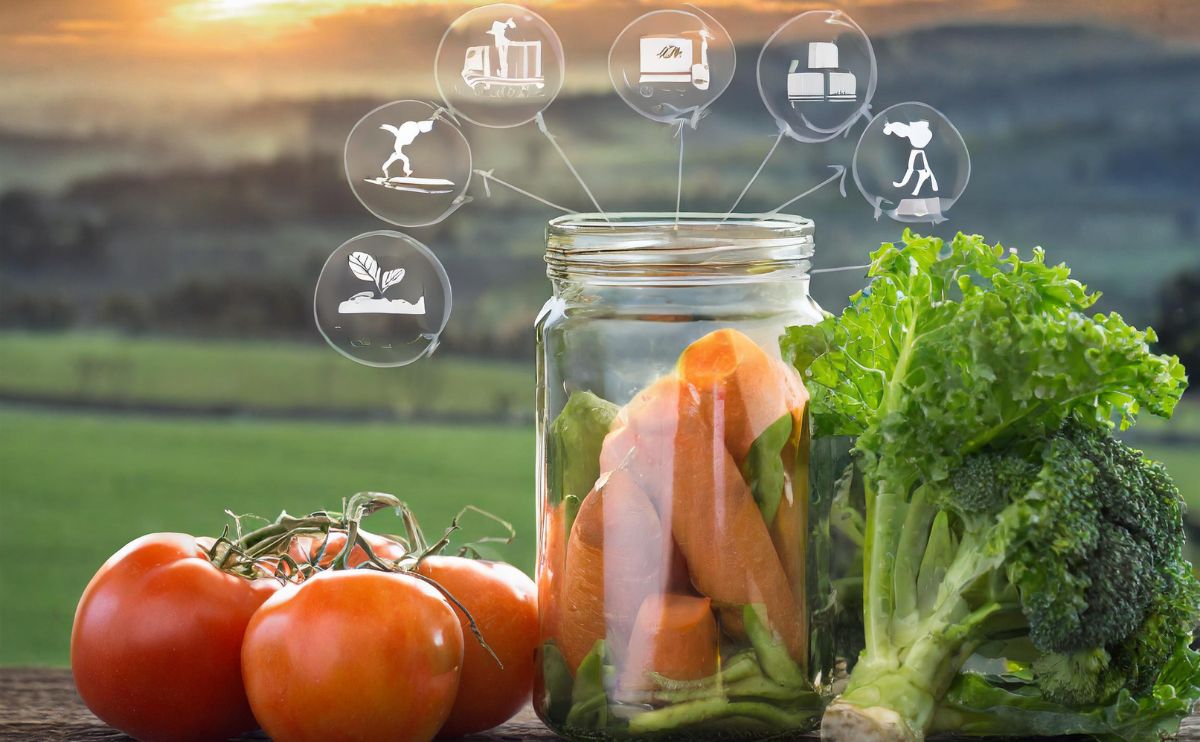The Journey of Your Produce: Understanding Supply Chain Transparency

In a world where consumers are increasingly conscious of where their food comes from and how it’s produced, understanding the journey of your produce through the supply chain has become more important than ever. From farm to table, every step in the process can have an impact on the environment, communities, and even your health. In this article, we’ll delve into the intricacies of supply chain transparency, uncovering the layers of information behind the food on your plate.
1. Introduction
Have you ever stopped to think about the journey your food takes before it reaches your plate? From the moment a seed is planted in the ground to the final product on supermarket shelves, your produce goes through a complex network of farmers, distributors, processors, and retailers. This journey, known as the supply chain, plays a crucial role in determining the quality, safety, and sustainability of the food we eat.
2. What is Supply Chain Transparency?
Supply chain transparency refers to the visibility and traceability of every stage in the production and distribution process of a product. It involves sharing information about where and how a product was made, the conditions under which it was produced, and the parties involved in its journey to the consumer.
3. Why is Supply Chain Transparency Important?
Supply chain transparency is essential for several reasons. Firstly, it allows consumers to make informed choices about the products they buy, ensuring that they align with their values and preferences. Secondly, it promotes accountability and ethical practices within the industry, as companies are held accountable for their actions and decisions. Finally, it helps to build trust between consumers and producers, fostering stronger relationships and loyalty.
4. The Benefits of Supply Chain Transparency
- Consumer Empowerment: By providing access to information about how products are made and sourced, supply chain transparency empowers consumers to make ethical and environmentally conscious choices.
- Improved Product Quality: Transparent supply chains often result in higher product quality, as companies are more likely to prioritize safety, sustainability, and ethical standards.
- Reduced Risk: Transparency helps to identify and mitigate risks such as food fraud, contamination, and labor exploitation, protecting both consumers and producers.
- Enhanced Brand Reputation: Companies that prioritize transparency and ethical practices tend to enjoy a better reputation among consumers, leading to increased trust and loyalty.
- Positive Social Impact: Transparent supply chains can have a positive impact on local communities by supporting fair labor practices, promoting economic development, and preserving cultural heritage.
5. Challenges in Achieving Supply Chain Transparency
While the benefits of supply chain transparency are clear, achieving it can be challenging. Some of the main obstacles include:
- Complexity: Supply chains can be highly complex, involving multiple stakeholders, processes, and geographical locations, making it difficult to track and monitor every step of the journey.
- Data Management: Managing and sharing vast amounts of data across different platforms and systems can be challenging, particularly for smaller companies with limited resources.
- Cost: Implementing transparency measures such as blockchain technology or third-party audits can be costly, especially for smaller producers and suppliers.
- Resistance to Change: Some companies may be reluctant to embrace transparency due to concerns about competitive advantage, intellectual property, or fear of negative publicity.
6. Technologies Driving Supply Chain Transparency
Advances in technology are playing a crucial role in driving supply chain transparency. Some of the key technologies include:
- Blockchain: Blockchain technology enables secure, transparent, and immutable record-keeping, making it ideal for tracking and tracing products throughout the supply chain.
- IoT (Internet of Things): IoT devices such as sensors and RFID tags can provide real-time data on the location, condition, and movement of products, improving visibility and accountability.
- Big Data Analytics: Big data analytics tools can analyze large volumes of data from various sources to identify patterns, trends, and potential risks in the supply chain.
- Mobile Applications: Mobile apps allow consumers to access information about products, scan QR codes for origin and certification details, and provide feedback on their experiences.
7. Case Studies: Examples of Transparent Supply Chains
Several companies have successfully implemented transparent supply chains, setting a precedent for others to follow. Examples include:
- Patagonia: The outdoor clothing company is known for its commitment to transparency and sustainability, providing detailed information about the sourcing and manufacturing of its products.
- Tony’s Chocolonely: This chocolate company is on a mission to eradicate slavery in the cocoa industry and provides full transparency into its supply chain, from bean to bar.
- Walmart: The retail giant has invested heavily in supply chain transparency initiatives, using blockchain technology to track the origin and movement of products such as pork and mangoes.
8. How Consumers Can Support Supply Chain Transparency
As consumers, there are several ways we can support supply chain transparency:
- Educate Yourself: Take the time to learn about the issues surrounding supply chain transparency and the impact of your purchasing decisions.
- Ask Questions: Don’t be afraid to ask companies about their sourcing and production practices and demand transparency and accountability.
- Support Ethical Brands: Choose products from companies that prioritize transparency, sustainability, and ethical practices.
- Advocate for Change: Use your voice to advocate for policies and regulations that promote supply chain transparency and hold companies accountable for their actions.
9. Conclusion
Understanding the journey of your produce through the supply chain is essential for making informed choices as consumers. By demanding transparency and accountability from companies, we can contribute to a more ethical, sustainable, and fair food system for all.